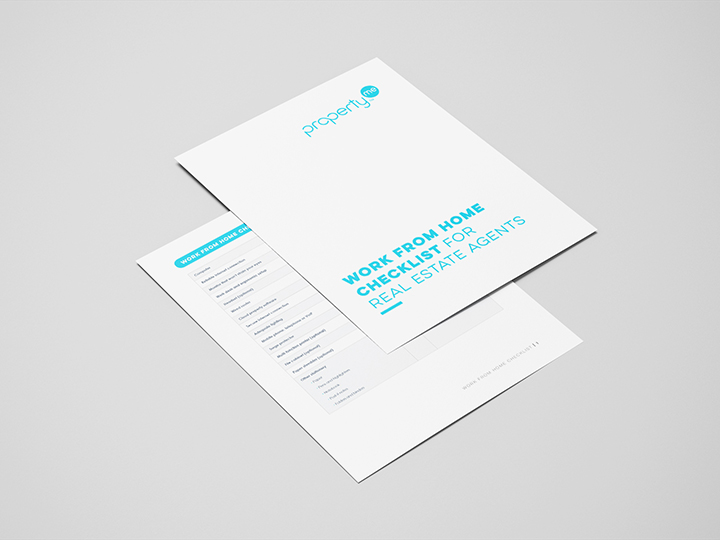Just three months into a new decade, the world saw bushfires ravage Australia, then the most serious global disease outbreak since SARS in 2002. Coronavirus has shut down entire cities, and has quickly spread across a planet that is more connected than ever.
It’s clear that the importance of business continuity planning for real estate agents has never been greater. While often ignored or glossed over when compared to the human and social impacts, the business effects of events such as natural disasters and pandemics can also be severe.
What is a business continuity plan?
A business continuity plan (BCP) is a set of guidelines designed to help your organisation through not just these newsworthy events, but any interruption to your business; a burst pipe that floods your office, an extended power outage, or a bout of sickness that keeps a critical mass of your workforce at home, for example.
Preparing for the unexpected makes business sense, particularly in these most unexpected of times. So how do you go about putting such contingencies in place?
How to develop a BCP for coronavirus
1. Establish a committee
The first step is to nominate the person or team responsible for delivering the BCP, and for that party to establish a committee. It’s important that every area of your agency is consulted, so that you gain a full understanding of all the factors at play. Forming a committee that features one leader from every department is a solid strategy.
2. Conduct an impact analysis
What are your agency’s mission-critical activities? In the event of loss, interruption or disruption, how quickly do these activities need to be recovered to ensure your agency isn’t adversely affected? What risks might your agency be exposed to, from burst pipes to pandemics?
These are the questions that a business impact analysis (BIA) is designed to answer. The BIA will underpin the entire BCP process, identifying, qualifying and quantifying the impact of a loss, interruption or disruption.
3. Mitigate risk
Guided by the BIA, it’s now time for you to do all that you can to mitigate the identified risks, whether they threaten your team members, your customers, your assets or the real estate agency as a whole. Examples of risk mitigation strategies include:
- Installing fire and security systems
- Eliminating single points of dependency
- Forming IT backup strategies
- Qualifying secondary suppliers and vendors
- Conducting preventative maintenance
- Cross-training employees across departments
- Imposing precautionary travel restrictions
- Keeping employees informed
- Conducting health and risk education
- Reviewing applicable insurance policies
4. Create business continuity strategies
However, risk mitigation is not enough. Sometimes truly unpredictable situations—like the global coronavirus outbreak—may occur, and your business needs to continue to operate. Therefore, crafting your business continuity strategies is the most important step in the BCP process.
Business continuity strategies include:
Working remotely
An unusable or unreachable office is perhaps the most common situation in which a business continuity plan is utilised. When your office is off limits, you’ll need to find somewhere else to work.
In the past that has meant moving to a secondary location or constructing a temporary office, but thanks to cloud property software, you can work from anywhere, as long as you have an internet connection. This is just one of the many benefits of using cloud property software.
Download our free work from home checklist for real estate agents.

Outsourcing work
In the event that you’re experiencing a shortage of staff, you can outsource administrative and repetitive tasks to ensure minimal disruption. There are many real estate outsourcing companies that can assist you. If you’re using cloud property software, you will be able to provide the outsourcing company the relevant level of access to your portfolio—read only, limited and standard (admin access is available but is not recommended for virtual assistants).
Utilising secondary suppliers and vendors
Who can you call on if your primary suppliers and vendors are not available? Create a list of secondary suppliers around the area and identify what category they fall under. This can include plumbers, tradespeople who can assist with emergency repairs, branded merchandise suppliers, IT support, locksmiths and more.
Switching to alternate operating procedures
Natural disasters can occasionally cause electrical outages. It is best practice to have manual and alternate operating procedures in the event that the internet or computer systems are down. These procedures should be documented in detail and be easy to follow.
5. Develop and publish your plan
Once again using the BIA as a guide, and calling on your risk mitigation and business continuity strategies, it’s time to develop your BCP. Your final plan should include:
- An introduction outlining policy, purpose and scope
- The goals and objectives
- Key roles and responsibilities
- The results of your business impact analysis
- Your risk mitigation plans
- Your business continuity strategies
- Plan activation and response strategies
- A communication and emergency alert strategy
- Training drills and exercises
- Ongoing maintenance and development of the plan
Be mindful to keep this document brief and impactful, as the information must be both easy to locate and easy to understand.
6. Train and implement
Your BCP is only as good as the team members who carry it out. Upon implementation, conduct training to ensure that every single employee understands the plan, knows what their individual responsibilities are, and has the opportunity to voice any concerns, as even the most thorough committee can be guilty of an occasional oversight.
7. Test it out
The best form of training is a dry run. Once everyone has been educated on the plan, choose a quiet day to test it out against a number of hypothetical situations. This helps to ensure that potential issues are highlighted, and that the plan is robust enough to take the strain when the time comes. Practice makes perfect, so dry runs will increase the likelihood of things running smoothly when the pressure is on.
The importance of business continuity planning for real estate agents has never been greater. With a BCP, you can be confident in your agency’s ability to not just handle challenging situations, but to continue to grow through them.
Thanks for reading! You might also be interested in 5 Ways to Attract and Retain the Best Property Managers, Industry Experts Reveal Real Estate Predictions for 2020 and How PropertyMe is Different.
Let us know your thoughts on Preparing for Coronavirus: Business Continuity Planning for Real Estate by emailing [email protected].


